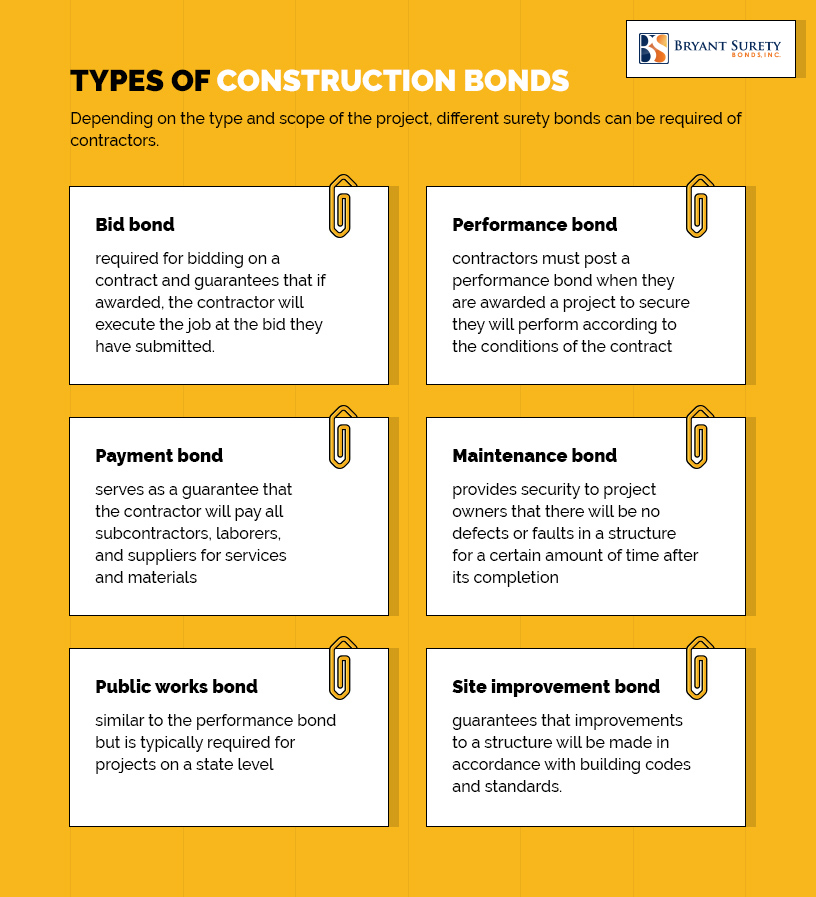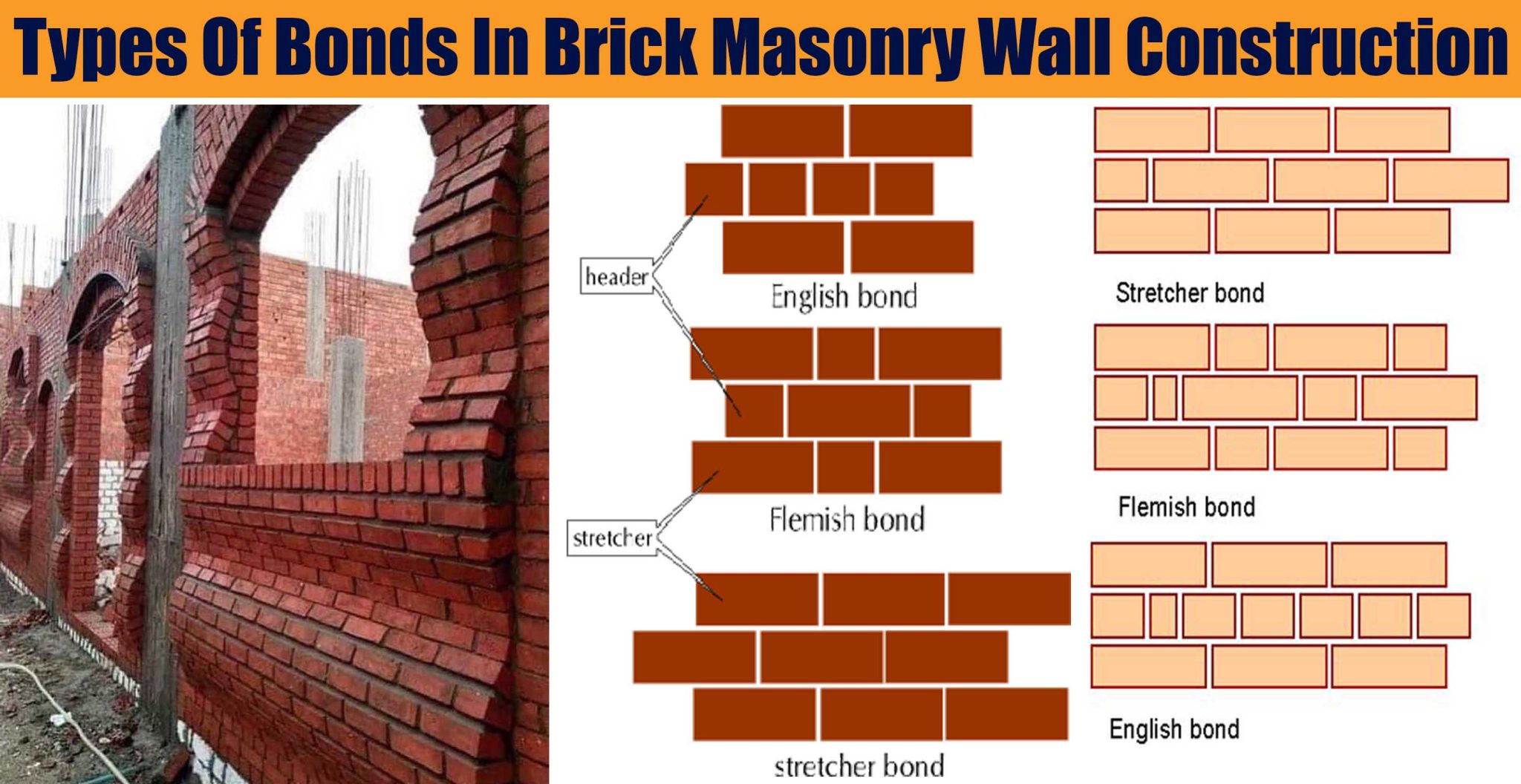Types Of Construction Bonds
Types Of Construction Bonds - Each serves a different purpose and safeguards. In this article, we examine the many types of bonds in the construction industry, and explain how each works. We’ll also look at the process to secure a bond and how to make a. The main types of construction bonds are bid bonds, performance bonds, payment bonds, maintenance bonds, and subdivision bonds. A construction bond is a type of surety bond used in construction projects to protect against an adverse event that causes disruptions or financial loss. There are two primary categories of construction bonds: There are several types of construction bonds used to guarantee construction and quality workmanship—often required by the government for public jobs and public works. General construction bonds encompass a range of bond types that. General construction bonds and specialized construction bonds.
The main types of construction bonds are bid bonds, performance bonds, payment bonds, maintenance bonds, and subdivision bonds. In this article, we examine the many types of bonds in the construction industry, and explain how each works. General construction bonds and specialized construction bonds. Each serves a different purpose and safeguards. We’ll also look at the process to secure a bond and how to make a. A construction bond is a type of surety bond used in construction projects to protect against an adverse event that causes disruptions or financial loss. There are several types of construction bonds used to guarantee construction and quality workmanship—often required by the government for public jobs and public works. General construction bonds encompass a range of bond types that. There are two primary categories of construction bonds:
General construction bonds and specialized construction bonds. There are two primary categories of construction bonds: There are several types of construction bonds used to guarantee construction and quality workmanship—often required by the government for public jobs and public works. In this article, we examine the many types of bonds in the construction industry, and explain how each works. We’ll also look at the process to secure a bond and how to make a. The main types of construction bonds are bid bonds, performance bonds, payment bonds, maintenance bonds, and subdivision bonds. Each serves a different purpose and safeguards. A construction bond is a type of surety bond used in construction projects to protect against an adverse event that causes disruptions or financial loss. General construction bonds encompass a range of bond types that.
Types of Bonds in Construction Contracts Bibloteka
General construction bonds and specialized construction bonds. In this article, we examine the many types of bonds in the construction industry, and explain how each works. Each serves a different purpose and safeguards. There are several types of construction bonds used to guarantee construction and quality workmanship—often required by the government for public jobs and public works. A construction bond.
Guide to Contract Bonds Bryant Surety Bonds
The main types of construction bonds are bid bonds, performance bonds, payment bonds, maintenance bonds, and subdivision bonds. A construction bond is a type of surety bond used in construction projects to protect against an adverse event that causes disruptions or financial loss. There are two primary categories of construction bonds: Each serves a different purpose and safeguards. There are.
Types of Construction Bonds Brunswick Companies
We’ll also look at the process to secure a bond and how to make a. In this article, we examine the many types of bonds in the construction industry, and explain how each works. General construction bonds and specialized construction bonds. A construction bond is a type of surety bond used in construction projects to protect against an adverse event.
Infographic Types of Bonds in Construction Credit NCS Credit
Each serves a different purpose and safeguards. General construction bonds and specialized construction bonds. There are several types of construction bonds used to guarantee construction and quality workmanship—often required by the government for public jobs and public works. We’ll also look at the process to secure a bond and how to make a. General construction bonds encompass a range of.
Types Of Construction Bonds Know Which One You'll Need For Your Next
There are two primary categories of construction bonds: We’ll also look at the process to secure a bond and how to make a. Each serves a different purpose and safeguards. There are several types of construction bonds used to guarantee construction and quality workmanship—often required by the government for public jobs and public works. General construction bonds encompass a range.
Types Of Bonds In Brick Masonry Wall Construction Engineering Discoveries
The main types of construction bonds are bid bonds, performance bonds, payment bonds, maintenance bonds, and subdivision bonds. There are two primary categories of construction bonds: There are several types of construction bonds used to guarantee construction and quality workmanship—often required by the government for public jobs and public works. Each serves a different purpose and safeguards. General construction bonds.
Understating Different Types of Construction Bonds Construction types
General construction bonds and specialized construction bonds. There are two primary categories of construction bonds: We’ll also look at the process to secure a bond and how to make a. The main types of construction bonds are bid bonds, performance bonds, payment bonds, maintenance bonds, and subdivision bonds. General construction bonds encompass a range of bond types that.
Types Of Bonds Used In Brick Masonry Wall Construction And Their Uses
A construction bond is a type of surety bond used in construction projects to protect against an adverse event that causes disruptions or financial loss. General construction bonds encompass a range of bond types that. In this article, we examine the many types of bonds in the construction industry, and explain how each works. We’ll also look at the process.
Types of Construction Bonds You Need for Your Project
General construction bonds encompass a range of bond types that. There are several types of construction bonds used to guarantee construction and quality workmanship—often required by the government for public jobs and public works. The main types of construction bonds are bid bonds, performance bonds, payment bonds, maintenance bonds, and subdivision bonds. There are two primary categories of construction bonds:.
Types of Construction Bonds Construction types, Infographic, Construction
There are two primary categories of construction bonds: We’ll also look at the process to secure a bond and how to make a. In this article, we examine the many types of bonds in the construction industry, and explain how each works. Each serves a different purpose and safeguards. There are several types of construction bonds used to guarantee construction.
General Construction Bonds Encompass A Range Of Bond Types That.
In this article, we examine the many types of bonds in the construction industry, and explain how each works. We’ll also look at the process to secure a bond and how to make a. There are several types of construction bonds used to guarantee construction and quality workmanship—often required by the government for public jobs and public works. Each serves a different purpose and safeguards.
General Construction Bonds And Specialized Construction Bonds.
A construction bond is a type of surety bond used in construction projects to protect against an adverse event that causes disruptions or financial loss. There are two primary categories of construction bonds: The main types of construction bonds are bid bonds, performance bonds, payment bonds, maintenance bonds, and subdivision bonds.









